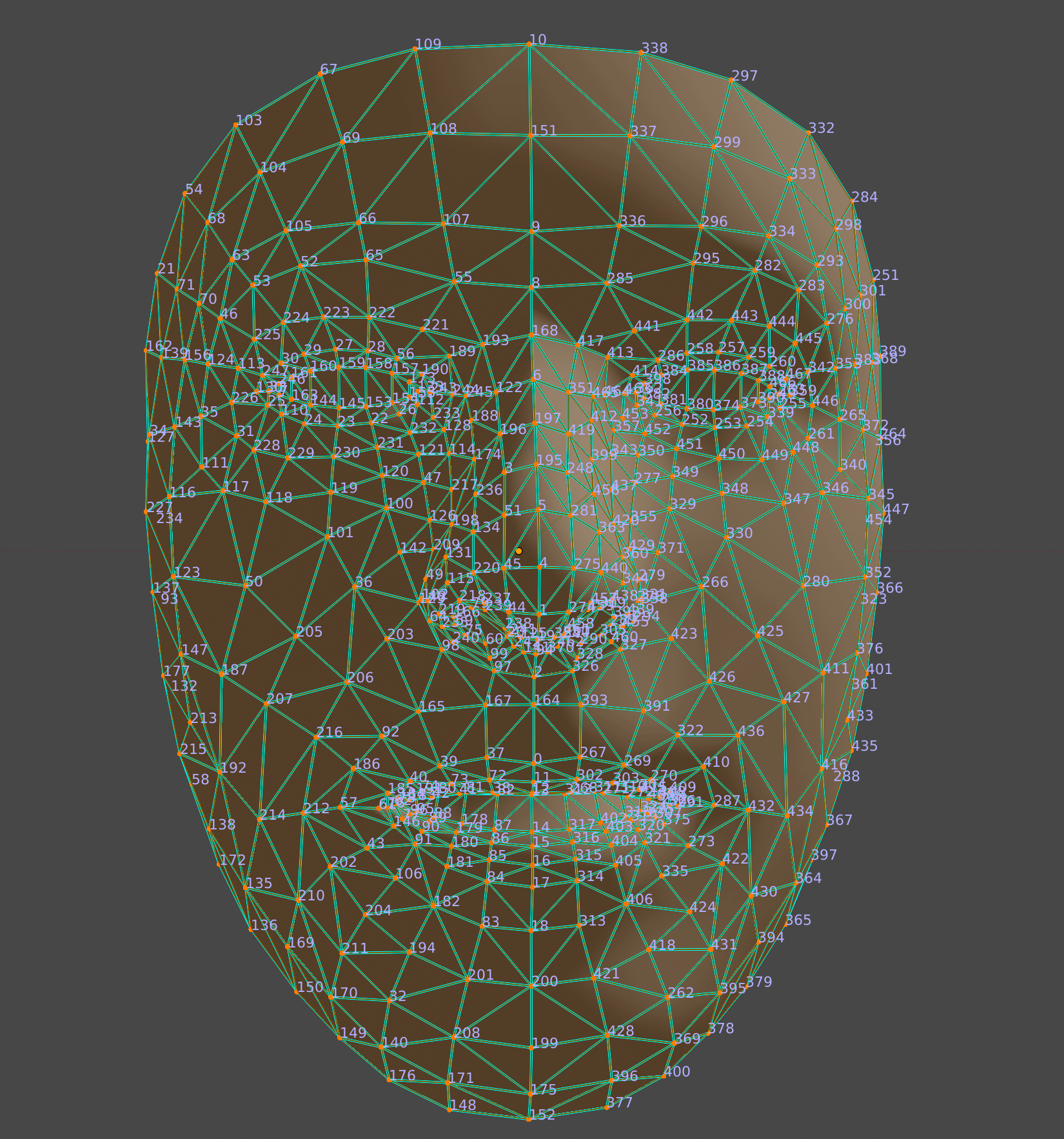平台专用指南
Android (Kotlin/Java)
Android NDK (C)
Unity(AR Foundation)
iOS
Unreal Engine
借助增强现实人脸 API,您无需使用专用硬件即可在人脸上渲染素材资源。它提供特征点,可让您的应用自动识别检测到的面部不同区域。然后,您的应用可以使用这些区域以适当的方式叠加资源,以便与单个面部的轮廓相匹配。
使用场景
基于人脸的 AR 技术可实现各种应用场景,从美妆和配饰试妆到用户可与好友一起享受的面部滤镜和特效。例如,使用 3D 模型和纹理将狐狸的面部特征叠加到用户的脸上。
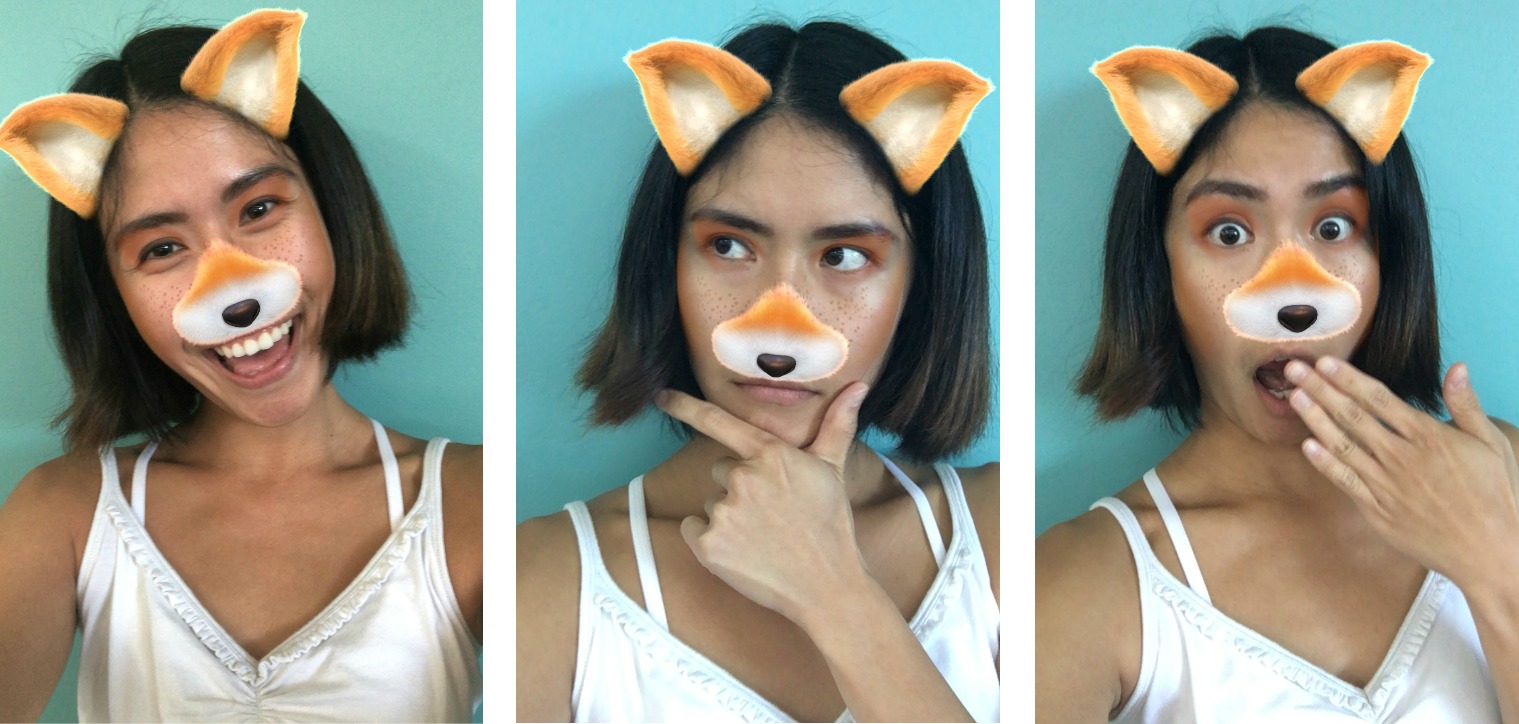
该模型由两个狐狸耳朵和一个狐狸鼻子组成。每个点都是单独的骨骼,可以单独移动,以跟随其所附加的面部区域。

纹理包括眼影、雀斑和其他着色。
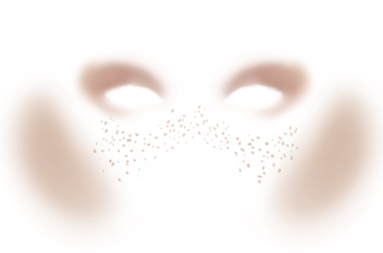
在运行时,Augmented Faces API 会检测用户的脸部,并将纹理和模型叠加到其上。
增强式人脸的各个部分
Augmented Faces API 提供一个中心姿势、三个区域姿势和一个 3D 人脸网格。
居中姿势
位于鼻子后面的中心姿势标记了用户头部的中间。您可以使用它来渲染头顶上的帽子等素材资源。
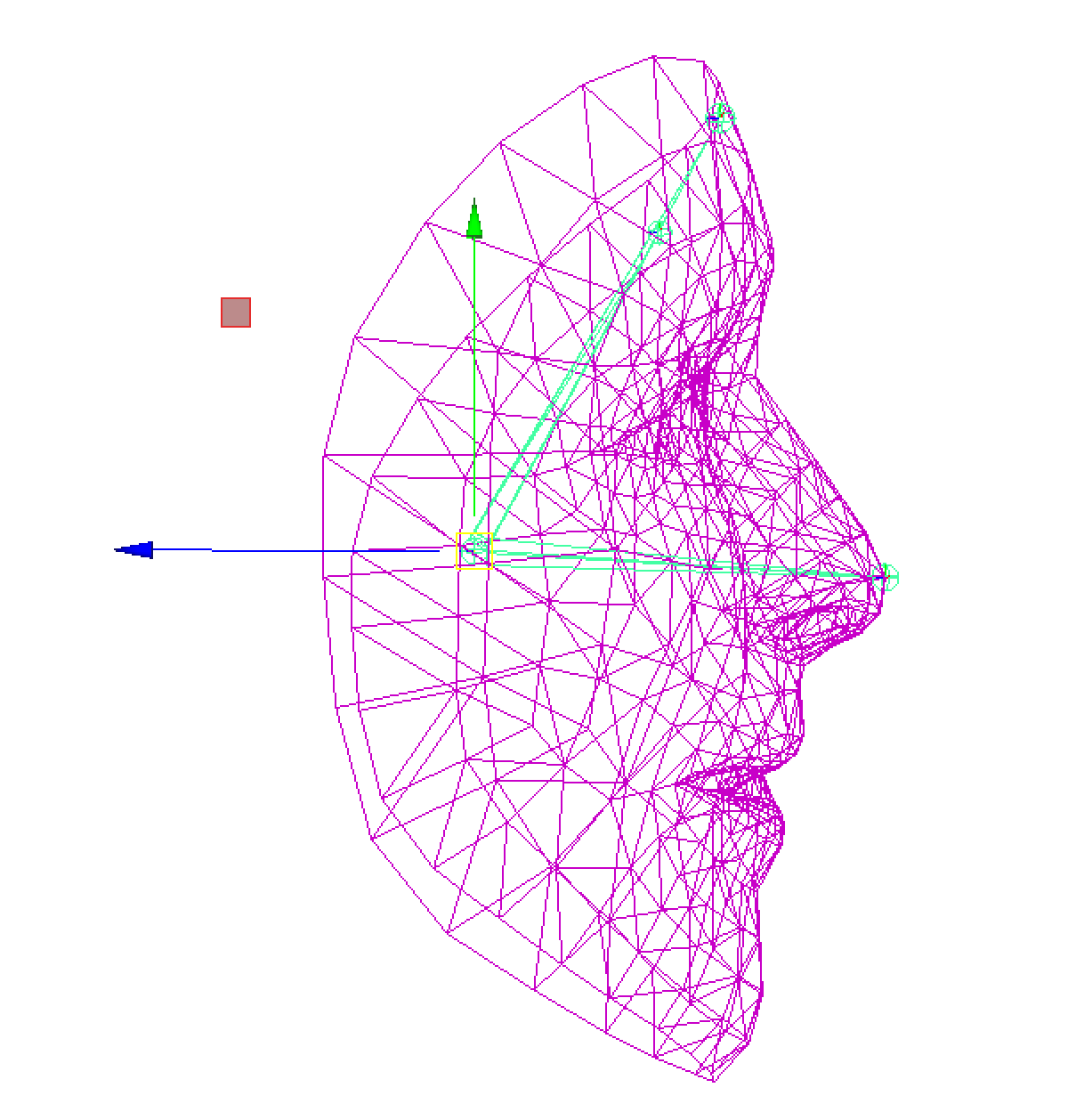
区域姿势
区域姿势位于左侧额头、右侧额头和鼻尖,用于标记用户脸部的重要部位。您可以使用它们在鼻子或耳朵周围渲染素材资源。
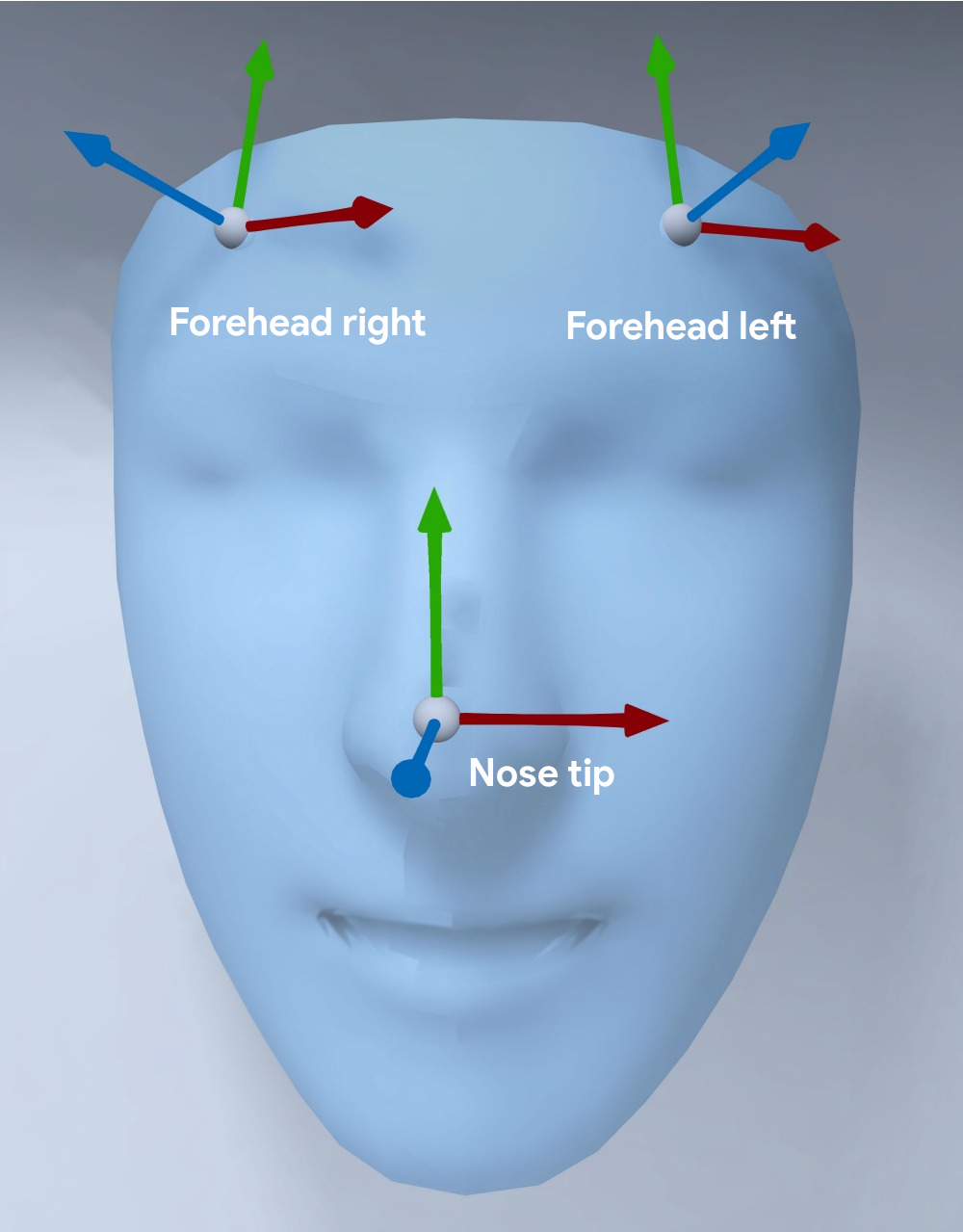
人脸网格
借助 468 点的稠密 3D 人脸网格,您可以绘制可自适应且细致的纹理,以准确跟踪面部,例如在鼻子的特定部分后面叠加虚拟眼镜时。网格会收集足够详细的 3D 信息,以便您轻松渲染此虚拟图片。
